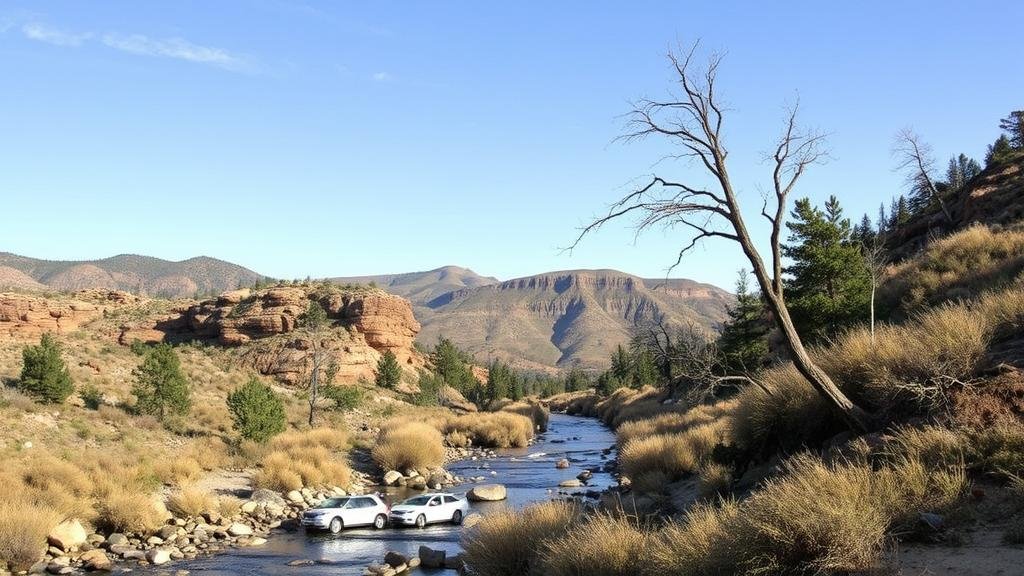How Prospectors Found Rich Pay Streaks Along the Sapillo Creek in the Gila Region
How Prospectors Found Rich Pay Streaks Along the Sapillo Creek in the Gila Region
The Gila Region of southwestern New Mexico has been a focal point for prospectors since the mid-1800s, particularly around the Sapillo Creek. Rich in mineral deposits, this area attracted countless individuals hoping to strike it rich during the gold rush era. This article explores how prospectors identified profitable pay streaks along the Sapillo Creek, detailing their methods, findings, and the lasting impact of their discoveries.
The Geology of the Gila Region
Understanding the geology of the Gila Region is crucial for grasping why prospectors found gold here. geological formations comprise a mix of ancient volcanic rocks and sedimentary deposits, which create ideal conditions for gold accumulation. The quartz veins found in this area typically contain gold due to hydrothermal activity, making them prime targets for miners.
Historical Context
The first significant discoveries of gold in the Gila Region occurred in the late 1800s. Prospectors were initially drawn to the area due to rumors of gold nuggets in the streams and rivers. Sapillo Creek became particularly notable with the discovery of rich pay streaks, sparking a flurry of mining activity.
- The 1849 California Gold Rush inadvertently led many prospectors through New Mexico, some of whom discovered gold in the Gila Region.
- The establishment of mining camps in response to these discoveries facilitated further exploration and settlement.
Techniques for Finding Pay Streaks
Prospecting for gold is both an art and a science. Prospectors used several techniques to locate rich pay streaks, including:
- Water Panning: Using simple pans, miners would sift through sediment in the stream beds, searching for gold particles.
- Metal Detecting: As technology progressed, metal detectors became a common tool, allowing for deeper and more efficient searches.
- Sluicing: This involved building sluice boxes to capture gold particles from larger amounts of gravel and sediment washed from the creek.
One notable case is that of George Washington, a prospector who, in 1882, used a combination of panning and sluicing techniques to uncover rich deposits along Sapillo Creek. His findings not only enriched his own fortune but also led to the establishment of a thriving mining community.
The Role of Community and Reports in Prospecting
Prospecting along the Sapillo Creek was not just an individual endeavor; it involved localized communities that shared information and resources. Newspapers and prospecting reports played a crucial role in disseminating news about successful finds, which encouraged more individuals to explore the area.
- The publication of mining reports in “The New Mexico Miner” led to increased activity along the creek.
- Local gatherings and prospecting clubs facilitated knowledge sharing and collaboration among miners.
Long-Term Economic and Environmental Impacts
The discovery of pay streaks along Sapillo Creek significantly impacted the local economy. The influx of prospectors created new jobs and established support businesses, such as supply stores and equipment rentals. But, these activities also led to environmental challenges, including erosion and habitat destruction.
Regulatory frameworks were eventually established to manage these impacts. In time, lessons learned from the mining practices of the past contributed to more sustainable mining practices in the region.
Conclusion
Prospectors found rich pay streaks along Sapillo Creek through a combination of geological understanding, historical context, innovative techniques, and community collaboration. Their efforts led to significant economic development in the Gila Region, while also providing important lessons regarding environmental management. The rich history and resources of this area continue to be a subject of study and admiration for those intrigued by the lure of gold.
In today’s context, the legacy of these early prospectors serves as a reminder of the enduring human spirit of exploration and discovery, as well as the importance of responsible resource management.


